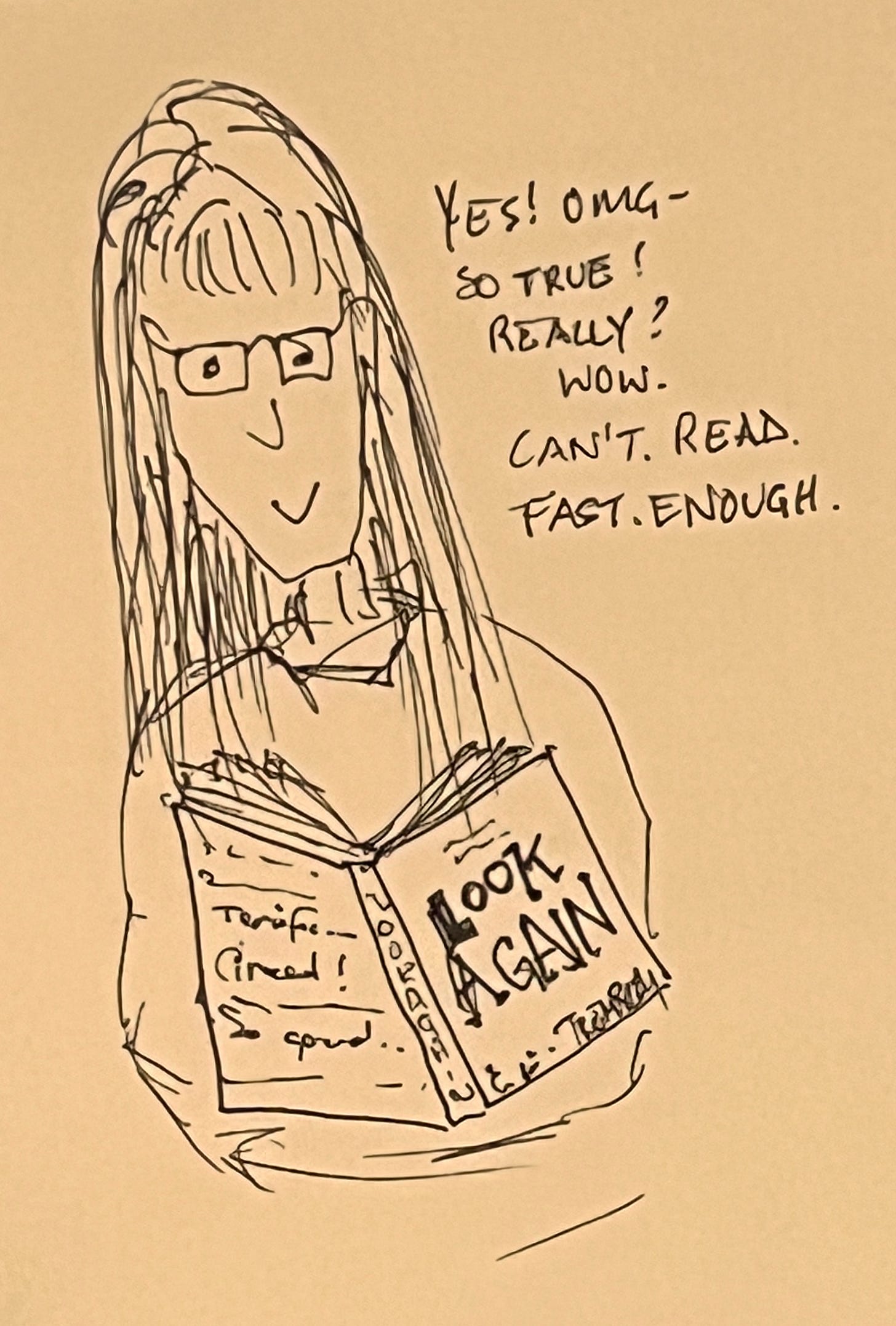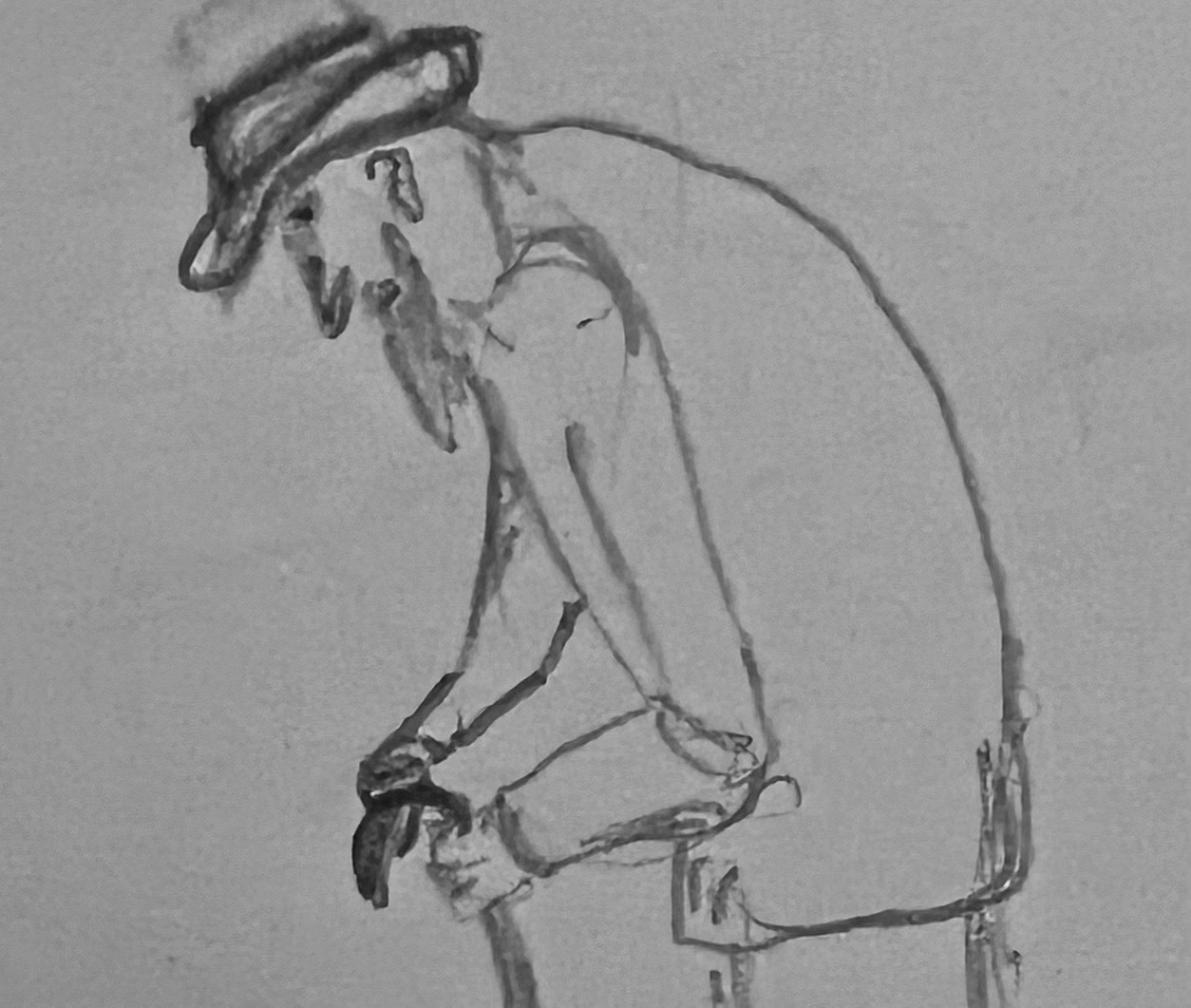One of the fringe benefits of plunging back into the graphic novel memoir project is discovering new authors in the genre. I can justify reading as many as I like because each page read and analyzed (and enjoyed) is research - right?
Look Again: A Memoir by Elizabeth Trembley
Look Again is an utterly captivating look at how memory works (or doesn’t), how we cope with trauma, and how we weave stories to help process live events.
The book opens with several evocative wordless panels in which the author/narrator arrives at the edge of a wooded area and sets off to walk her dogs. This quiet opening quickly fractures into a series of jagged partial images - a shoe, a hand, a cap, a knotted rope - you know that nothing good can emerge from the increasingly dark pages. A figure, dead, in a tree - contorted limbs draped over bare branches let us know that this is not going to be a gentle tale of forest-bathing.
This opening incident - finding a dead body while walking the dogs - is the story the narrator retells several times over the course of the rest of the book (and a span of many years).
With each iteration, new aspects of the narrative are revealed as Trembley pieces together not only what really happened, but also comes to an understanding of why she acted as she did after her grisly discovery.
I tore through the book the first time I read it, completely captivated by Trembley’s exploration of memory, trauma, missing time, fear, and the fallout that can follow being in the wrong place at the wrong time.
We all know that memory is notoriously slippery, but I can’t think of a better example of a storyteller illustrating just how tenuous our grip on our own perceptions, recollections, and understanding really is.
The message is delivered with such force and conviction in part because of the medium - the graphic novel memoir. As someone who has written a bazillion words over a long career as a writer, I am well aware just how hard it can be to accurately convey a state of terror or confusion or a situation in which many things are happening at the same time. The written narrative is consumed in a linear manner - one word after the other - an image is gulped into consciousness in one big swallow.
The effective use of image, design, white space, and abstraction allows the author to convey chaos and emotion with only a minimal amount of text. Looking at the page, we immediately ‘get’ the message.
This is hugely reassuring as I grapple with how best to convey a complicated twist of emotion as experienced over a lifetime by several key players. At the same time, it’s daunting to think just how much I need to learn when it comes to this new (to me) visual storytelling language.
What I also find fascinating is the way in which the act of drawing the story becomes a means to process what happened to the author and, ultimately, helped her come to a deeper understanding not only of the events as they unfolded but also an acceptance of (and insight into) herself.
I have often turned to my journals and writing to sort out my thoughts and feelings about situations I found challenging, perplexing, or upsetting. Writing my way way to some sort of resolution has been helpful on many occasions. Now I wonder what additional layers of meaning may reveal themselves if I keep drawing?
Already there are hints that this is happening. I see and hear my parents speaking to me through the images of them (however crudely drawn) that appear on the page. The experience of trying to capture their essence visually is different somehow to just relating an anecdote. It might take a paragraph to describe how my father’s frame drooped in his latter years, the curve of his spine, the way he leaned on his cane, how he dressed, his hat.
The drawing may not be anything special, but those few pencil strokes evoke a memory that is stronger and more specific than any number of words I might string together.
Here’s a little more information about the author (from the jacket blurb):
Elizabeth A. Trembley is a Lambda Literary Award-winning mystery writer who now tells her stories in comics. She has a PhD in literature from the University of Chicago. Elizabeth currently works for the Sequential Artists Workshop. She lives in West Michigan with three big dogs, two cats, a collection of Batman toys, and her Episcopal priest wife. And she walks in the woods every day.
What do you think? Do you think graphic novels can capture a story in a way that’s impossible using only text? And, because I’m on a reading frenzy at the moment, what’s your favourite? I’ll feature more of my favourites in future newsletters, so stay tuned.








Thanks for the intro to this novel.
While reading your words, my mind kept sliding over to my own memories and how they might look on paper. I must cultivate a habit of this interesting art form and the perspective it highlights. (No puns intended)